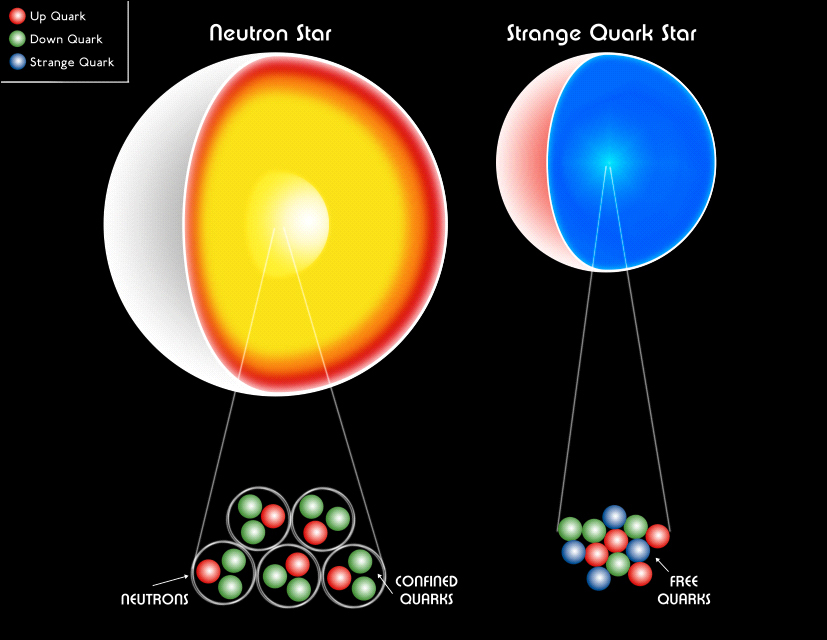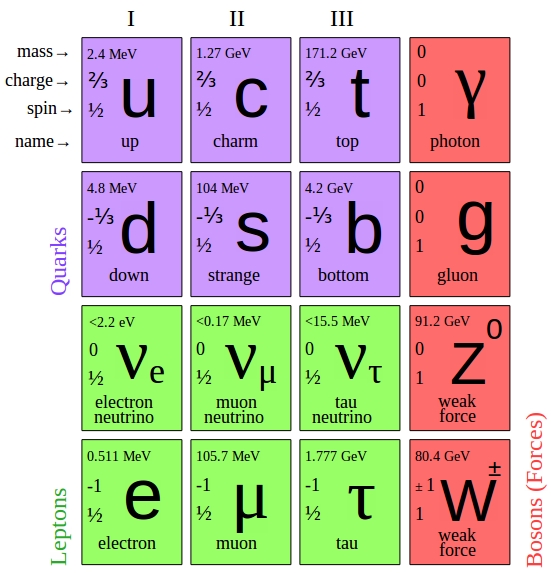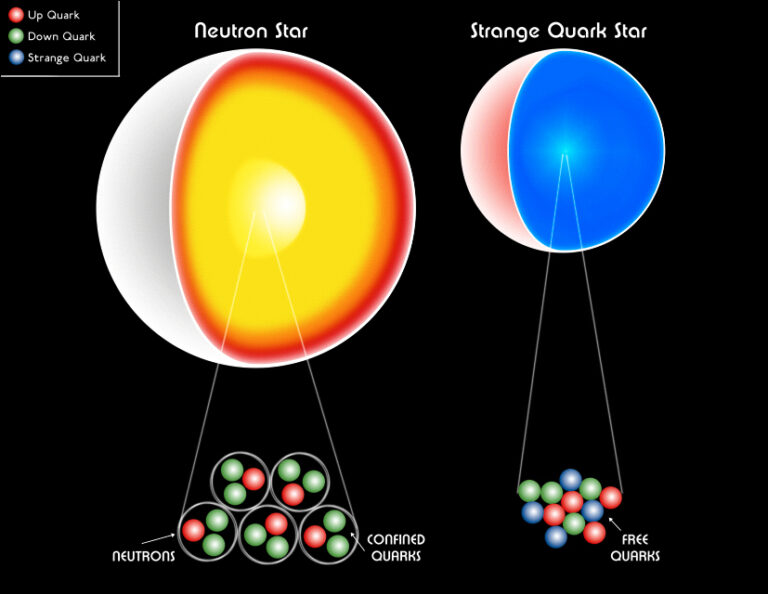Impact of CERN’s Unearthed Exotic Particles on Astrophysics
You might have come across the news about CERN’s revelation regarding the identification of a peculiar particle called Z(4430). The findings, outlined in a paper available on the physics arXiv – a repository for preprints (yet to undergo peer review) of physics papers – introduce a particle roughly four times more massive than a proton. With a negative charge, this particle is speculated to be a tetraquark, a theoretical entity.
Although the results are in the early stages, if the discovery withstands scrutiny, it could potentially impact our comprehension of neutron stars. The fundamental constituents of matter encompass leptons (e.g., electrons and neutrinos) and quarks, the latter constituting protons, neutrons, and various particles. Quarks, distinct from other particles, carry an electric charge that is either 1/3 or 2/3 of that found in electrons and protons.

Additionally, quarks possess a distinct form of “charge” known as color. Similar to electric charges interacting via electromagnetic force, color charges interact through the strong nuclear force, crucial for holding atomic nuclei together. Unlike electric charge simplicity – positive (+) and negative (-) – color charge complexity involves three types (red, green, and blue) and their opposites (anti-red, anti-green, and anti-blue). Due to the nature of the strong force, observing a free quark is impossible.
The strong force mandates quarks to always combine, forming a particle that is color neutral. For instance, a proton comprises three quarks (two up and one down), each representing a different color. Analogous to combining red, green, and blue light to produce white light, which is colorless, merging a red, green, and blue quark yields a particle that is color neutral. This resemblance to the color properties of light is why quark charge is termed after colors.

Combining a quark of each color in sets of three represents a method to generate a color-neutral particle, termed baryons. Protons and neutrons exemplify the most prevalent baryons. Another approach involves pairing a quark of a specific color with its corresponding anti-color quark. For instance, a green quark could pair with an anti-green quark to create a color-neutral particle.
These two-quark entities are recognized as mesons, initially identified in 1947. For instance, the positively charged pion comprises an up quark and an antiparticle down quark. Within the framework of the strong force rules, alternative ways exist for quarks to unite and form a neutral particle. The tetraquark, encompassing four quarks, where two possess a particular color and the other two exhibit corresponding anti-colors, is one such form. Others, like the pentaquark (3 colors + a color anti-color pair) and the hexaquark (3 colors + 3 anti-colors), have been proposed but remain theoretical. While these particles would maintain color neutrality, there’s the possibility that they lack stability and would decay into baryons and mesons.
While experimental indications of tetraquarks have surfaced, this recent outcome stands as the most robust evidence of four quarks coalescing into a color-neutral particle. This discovery implies that quarks can amalgamate in more intricate configurations than initially envisioned, influencing the internal structure of neutron stars.
Traditionally, a neutron star has been perceived as primarily composed of neutrons. Neutrons consist of three quarks (two down and one up), and interactions within a neutron star were thought to involve interactions among neutrons. However, the existence of tetraquarks raises the possibility of strong interactions among neutrons in the core, giving rise to the formation of tetraquarks. This scenario might lead to the creation of pentaquarks and hexaquarks, or even interactions where quarks exist individually without being bound into color-neutral particles. The culmination could be a hypothetical entity known as a quark star. While these scenarios remain speculative, the confirmed existence of tetraquarks will compel astrophysicists to reassess certain assumptions regarding the interiors of neutron stars.
This article is republished from PhysORG under a Creative Commons license. Read the original article.
Do not forget to share your opinion with us to provide you with the best posts !





0 Comments